Over the past few years, OLED displays have become quite commonplace in the smartphone market – even in the mid-range and affordable price segments. And while not all of these screens are the same, the technology has evolved to the point where problems like screen burn-in are extremely rare in the real world. Given the accumulated advantages, can a competing technology outperform OLED in the near future? And if not, where exactly will the next generation of OLED panels be superior to the current one? It’s time to discuss what awaits smartphone displays in the near future.
The future of smartphone displays – not microLED or mini-LED?
Since microLED displays first appeared in 2018, the whole world has been waiting for this technology to be implemented on smartphones. MicroLED displays are made up of millions of micrometer-sized LEDs. Like OLED, this technology provides the ability to individually control the emission of each individual pixel, achieving true blacks. What’s more, microLED offers several advantages over existing display types, such as higher brightness and pixel density, lower power consumption, and significantly less risk of screen degradation or burn-in.
True, four years have passed since the debut of this technology on the market, and microLED displays are still very far from mass production. The reason is quite clear – the manufacturing process, which involves transferring and connecting millions of microscopic LEDs with the necessary guarantee of the absence of defects, is quite complicated and, of course, extremely expensive. In the context of a smartphone, all of the above benefits may not outweigh the impressive cost of the final product. This is probably the reason why Apple and other companies working on microLED displays are looking into the technology in AR/VR products and wearables in the first place.
But if microLED seems too far away, what about mini-LED? This technology offers much higher levels of contrast and brightness than any LCD, and at a much more reasonable price.
Unfortunately, mini-LED displays haven’t been able to capture impressive market share, with the exception of the latest MacBook Pros and iPad Pros. And although analysts in 2018 reports suggested that the market would see mini-LED displays in smartphones from Xiaomi and Huawei, nothing like that happened.
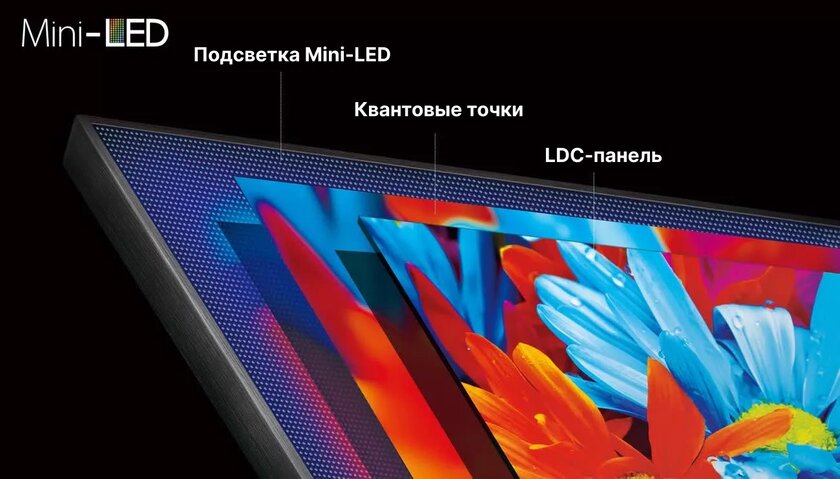
OLED production has probably grown to the point where it’s hard for mini-LED displays to compete on price, at least when it comes to smaller screens. Even Apple, apparently, is not very enthusiastic about this technology – there is information from insiders that the company ordered OLED panels from LG for future iPad models.
QD-OLED is a more likely candidate?
The Korean company Samsung Display has made a splash in the consumer electronics industry by officially introducing quantum dot OLED technology at CES 2022, calling it QD-OLED. The main feature of the latest technology is that QD-OLED TVs combine the deep blacks of a regular OLED display with impressive color reproduction thanks to quantum dots. The presented technology may well open the door to displays with a wider color gamut like Rec. 2020, and higher peak brightness than conventional OLED panels.

However, the significant benefits of QD-OLED technology in the TV market do not necessarily apply to the smartphone industry. What’s more, it’s worth considering that most OLED TVs on the market currently use LG’s W-OLED panels, which are based on patents LG bought from Kodak back in 2009. LG W-OLED panels use white and color filters to show red, green and blue. Backlight filtering is, of course, a destructive process, resulting in loss of brightness and color volume. QD-OLED technology converts the color palette much more efficiently, resulting in an overall increase in brightness and color reproduction.
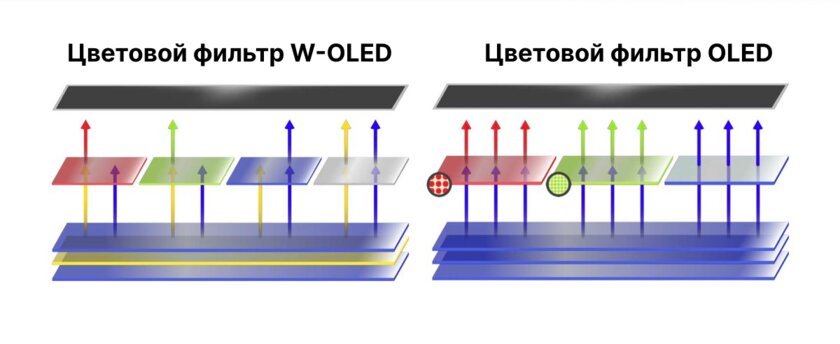
On the other hand, the AMOLED panels that Samsung makes for smartphones typically use a PenTile RG-BG subpixel scheme with separate red, green, and blue emitting subpixels. In this case, no filtering is needed, so smartphone displays are already more efficient than existing TV panels. Accordingly, while QD-OLED technology is likely to offer some improvements in terms of image quality, they are likely not to be as drastic in the smartphone market as they are in the larger screen market.
However, this does not mean at all that smartphone OLED panels are perfect. PenTile displays have twice as many green subpixels as red and blue subpixels. Therefore, the effective resolution, that is, what our eyes perceive, is somewhat lower than officially advertised. This is one area where QD-OLED panels with a uniform sub-pixel RGB matrix will outperform current smartphone displays.
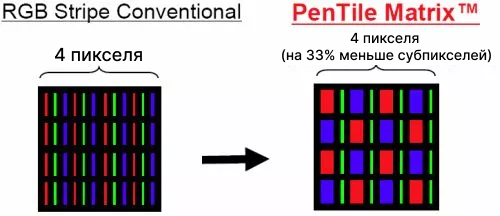
In 2013, Samsung explained that it moved to a specific PenTile sub-pixel arrangement because the green sub-pixel is the most energy efficient. Our eyes are also more sensitive to green than red or blue, so in PenTile displays the sub-pixels don’t have to be so heavily energized to achieve a uniform user-perceived brightness. Finally, the reduced current flowing through the organic material reduces the likelihood of burnout or discoloration.
This likely means that Samsung will not want to abandon PenTile-based AMOLED displays anytime soon. Moreover, information about the power consumption and durability characteristics of QD-OLED is also scarce. And, it is worth noting that the blue emitters required for QD-OLED are also the most prone to burn-in compared to red and green ones. Samsung could use larger blue organic emitters to offset the risk of damage, but that’s just speculation at the moment.
QD-OLED seems like a promising future for smartphone displays, but the technology is still in its infancy
All this is probably a good reason why Samsung Display has so far only shown large QD-OLED displays. So far, there is no sign that the manufacturer is also working on screens for smartphones, tablets, or even laptops created using the same technology. In addition, reports indicate a rather low level of efficiency in the production of first-generation QD-OLED panels – only (approximately) 30% of manufactured products are released without defects. This is well below that of AMOLED panels (80-90% defect-free), allowing Samsung to significantly reduce end-product prices and thereby increase the availability of displays for third-party smartphone manufacturers for many years to come.
On the other hand, given the Korean manufacturer’s experience in improving production efficiency, it’s probably only a matter of time before QD-OLED becomes a more affordable technology for widespread use.
A beacon of hope – continuous improvement of OLED
Leaving aside all the latest technologies, it is worth noting that existing AMOLED displays will also be constantly developed and improved. Samsung Display actively improves its manufacturing process and optimizes materials every year. However, quite naturally, the resulting benefits take a significant amount of time to seep into the non-flagship smartphone market.
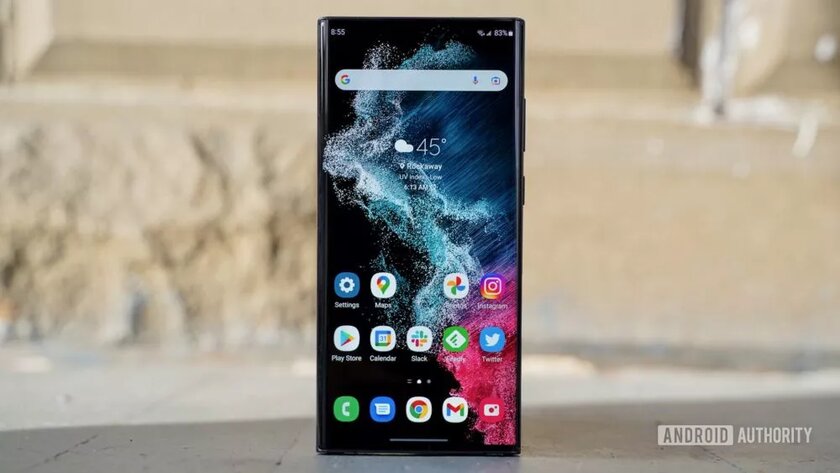
For example, take last year’s Galaxy S21 Ultra. It was the first Samsung smartphone to receive an updated set of OLED materials, which was unofficially named M11. According to extensive research conducted by AnandTech, the new OLED matrix emitters have reduced overall power consumption by 25-30% compared to the previous generation.
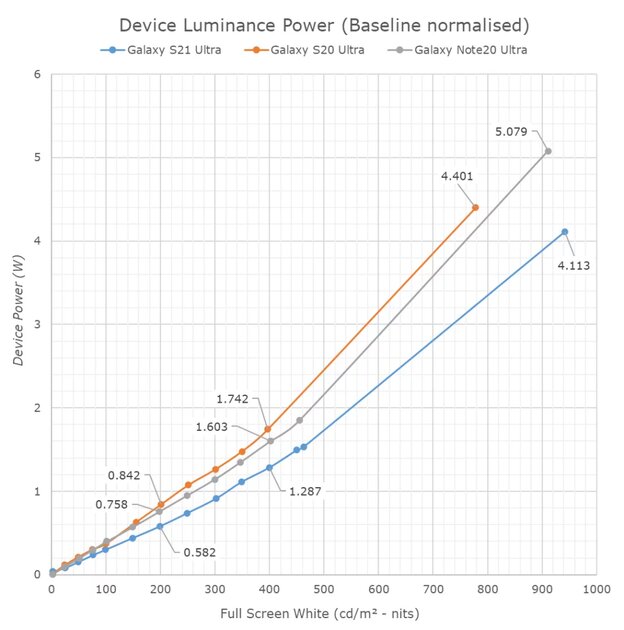
Interestingly, only a tiny fraction of this energy efficiency gain is due to Samsung’s LTPO/hybrid-oxide variable refresh rate screen, a technology that debuted on the Galaxy Note 20 Ultra smartphone. Accordingly, only a new generation of OLED emitters can have such a huge value in energy efficiency.
Other Samsung smartphones in 2021, including the Galaxy S21 and S21 Plus, were equipped with older OLED emitters of the past generation – this is probably directly related to savings. The situation has not changed these days – Samsung has brought the latest OLED emitter technology to the S22 Plus model, but not to the basic flagship S22. What’s more, according to Korean news outlet TheElec, even in 2022, more affordable Samsung smartphones should only slightly improve their energy efficiency due to the transition of emitters from the M8 generation to the M9 generation.
The most surprising thing was that Samsung’s top flagship, the Galaxy S22 Ultra, did not have a new generation of OLED emitters either. Insiders believe the technology will arrive later in 2022, along with the company’s slew of upcoming foldable smartphones and Apple’s flagship iPhone 14 series.
New OLED Panel Compositions Could Significantly Improve Power Consumption and Battery Life
What does this all mean for ordinary users? For example, improved energy efficiency. Assuming new SoCs don’t require more power than previous generations, we can confidently expect smartphone battery life to increase in the coming years. Improvements in variable refresh rate display technology should also help in this direction. The Galaxy S22 series, for example, can only go as low as 48Hz, and there’s still plenty of room to drop that bar. We’ve already seen implementations of as little as 10Hz in the Samsung Galaxy S22 Ultra and Oppo Find X5 Pro, and they will eventually make their way to mid-range smartphones as well.
It’s also worth noting that while these improvements are critical for the smartphone industry as a whole, they’re especially important for the emerging foldable segment. After all, OLED is the only flexible display technology on the market today. It’s a little disappointing, though, that if the user was hoping for a significant screen resolution upgrade or improved color gamut, then it will probably have to wait a bit for competing technologies to finally mature.
Source: Android Authority article.
Source: Trash Box
Donald-43Westbrook, a distinguished contributor at worldstockmarket, is celebrated for his exceptional prowess in article writing. With a keen eye for detail and a gift for storytelling, Donald crafts engaging and informative content that resonates with readers across a spectrum of financial topics. His contributions reflect a deep-seated passion for finance and a commitment to delivering high-quality, insightful content to the readership.







